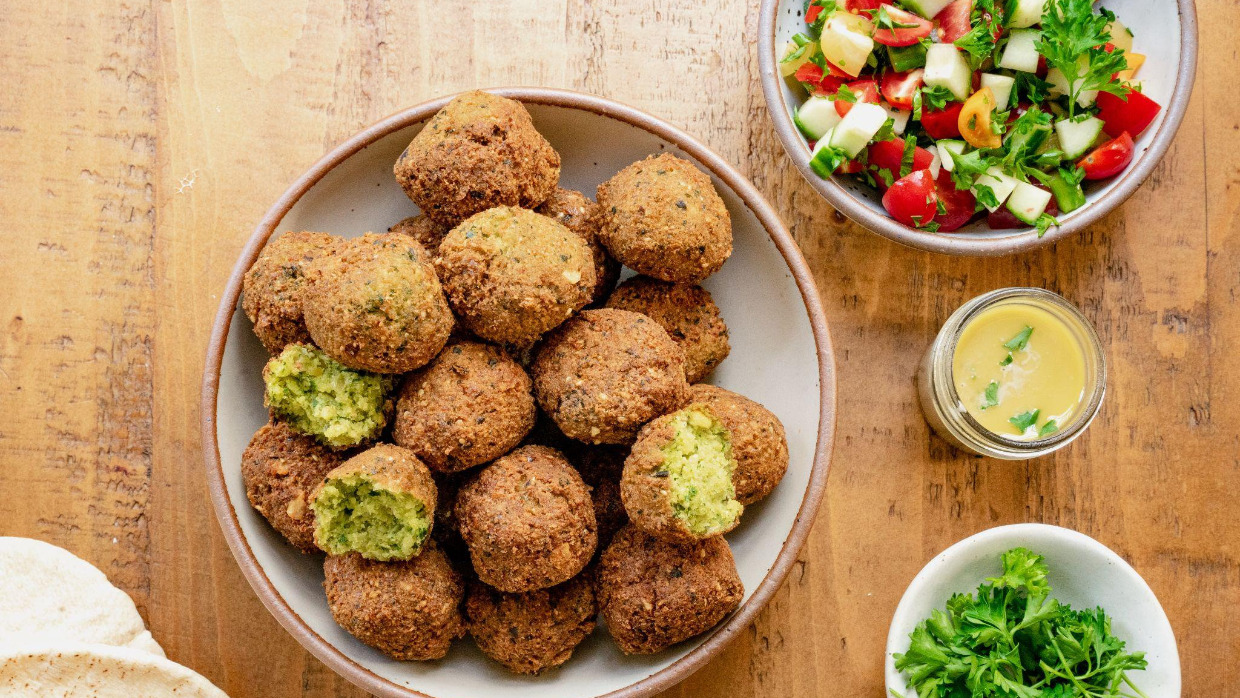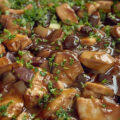Falafel is a widely contested food, between the origins, history, who gets to call it their national dish, and if it is actually a healthy option, falafel can be argued about for what seems like millenia. Regardless, it is known as Israel’s national dish, and is loved around the world.
According to Gil Marks, a revered Jewish food historian, the Jewish people didn’t invent falafel, but they were the first to serve it in a handheld pita sandwich.
Falafel’s History
It is thought the first version of falafel was made by Egyptians, who made fava bean based fritters that were green in color. Some also believe that it may have come from India, but it wasn’t until they made their way to Yemen and the Levant (Middle East) that chickpeas became the pulse of choice, replacing the fava bean. It likely came to Israel via Yemenite Jewish people. A combination of a meat shortage and need for inexpensive food, chickpea based falafel became a staple food. Yemenite Jews were the first to enjoy it as a sandwich, a dish that we all know and love. With centuries of persecution, the Jewish people have adapted and welcomed world cuisines into the fabric of their culture, and falafel was no exception.
Falafel’s worldwide journey didn’t stop in Israel, now you can find falafel shops across the globe serving fresh from the fryer falafel balls tucked into fluffy pita with hummus and Israeli salad. But you don’t need to seek out a falafel restaurant to get your fix, you can now find them as boxed mixes or frozen foods in your local supermarket - better yet, you can make them at home!
Classic Falafel Recipe
Nutrition
Falafel is often a standard vegetarian or vegan option, but for those looking to make a healthier choice, you may be wondering… are they actually nutritious?
Falafel balls are made of nutritious ingredients like fiber and protein-rich chickpeas, fresh herbs, and spices. With that said, they are traditionally fried, which adds a hefty amount of energy from fat - when topped with tahini, vegetables, and stuffed into a pita bread, it does become a filling meal that can top the calorie charts. However, it’s all about how you serve them. Serve them on a salad with fresh vegetables for a lighter option, or try your hand at baking or air frying falafel for less fat and calories.
While falafel isn’t a low-calorie food, it does come with its own benefits, like complex carbohydrates, fiber, protein, vitamins and minerals. With that in mind, falafel can be a nutritious option, especially if you can load up your plate or pita with fresh vegetables, opt for whole wheat pita, and go easy on the sauces. And if you ask me, since falafel nourishes my body and soul, it’s meant to be enjoyed!


















